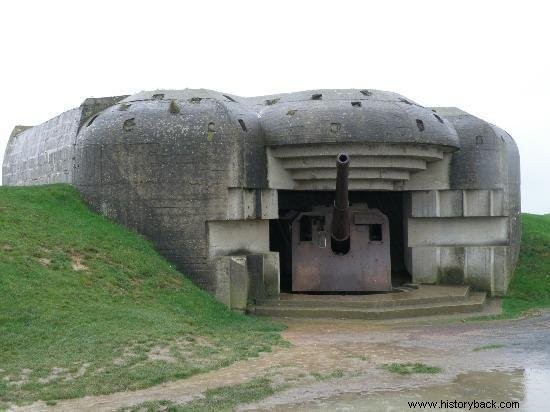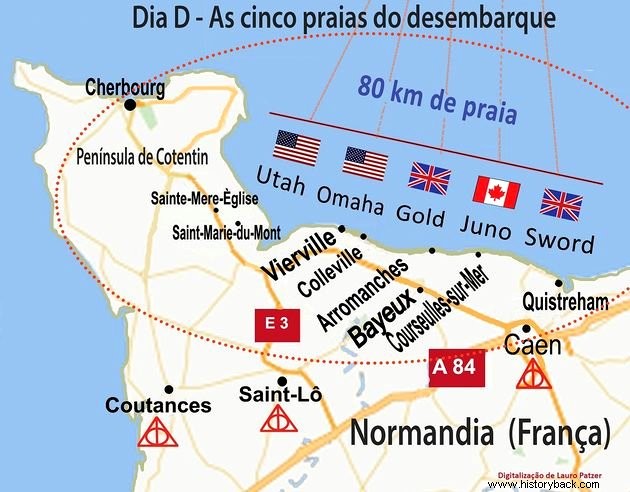D-Day or Decision Day is the name by which the landing of Allied troops in northern France on June 6, 1944 is known. .
Abstract
Discussion of the Allied attack on Normandy began in January 1943 in Casablanca. The proposal still divided the Americans and the British. The former wanted to invade the European continent through the English Channel, while the British premier Winston Churchill wanted the landing to take place somewhere in the Mediterranean.
Thus, the Americans, in July 1943, disembarked in Italy where they will count on the reinforcement of Brazilian troops.
The Soviets had already breached the Eastern Front after the bloody Battle of Stalingrad. So they hoped they could relieve German pressure in that region.
Therefore, D-Day was intended to open a second battlefront in Western Europe.
After the Tehran meeting, which took place in late 1943, three million troops from British, US and Canadian forces began to concentrate in southern England.
The military was supported by 10,000 planes, 7,000 ships, 30,000 special vehicles and amphibious tanks. Infrastructure would be deployed to attack the Germans along the northern coast of France.
What happened?
The general commander of the battle, the American general Dwight D. Eisenhower argued that the attack would be a fatal blow against Germany. D-Day occurred after the bombing of the German army's trenches and the destruction of their communication routes.
On the night of June 5th, some 13,000 Allied paratroopers were dropped onto the beaches of France beyond the German lines where only a third would survive.
The next day, the beaches of Normandy were invaded by 6,500 ships. The vessels remained in a range of 80 to 100 km.
The attack allowed 150,000 troops to reach the European continent. Strategic points were also reached, such as the headwaters of bridges and on this day alone, 12,000 soldiers died.

According to historians, the Germans had hoped that the operation would be postponed until the European summer. The German command concentrated soldiers in the narrowest part of the English Channel. The expectation was that the attack would occur at that point.
Taking the beaches, however, was no easy task. Hidden in the casemates and high on the cliffs, the German soldiers took considerable casualties among the Allies.
Some strategic mistakes by Germany favored the victory of the Allies. The fact that they waited for the attack to happen in Calais and the delay of the Luftwaffe planes in arriving at the scene contributed to D-Day being successful.
After taking Normandy, Paris was liberated on August 25, 1944.
Disembarkation Map

For the attack to be a success, secrecy was essential. In this way, the invasion of Normandy proceeded very discreetly.
So that the messages would not be deciphered by the Germans, the beaches where the Allies intended to land were given names in English such as Utah, Omaha, Gold, Juno and Sword.
Despite going through history with military jargon, "D-Day", the plan was officially named "Operation Overlord".
Read more about the Major Battles of World War II.
Curiosities
- D-Day claimed 110,000 fatalities:77,866 Germans, 5,001 Canadians, 9,389 Americans, 17,770 Britons and thousands injured.
- 30,000 bombs were dropped on the region during the attack.
- An estimated 20,000 civilians died as a result of the attack and invasion.
- After the invasion, the Nazis lost the initiative in the war and began to retreat further and further until capitulation on May 8, 1945.
Read more :
- World War II
- Brazil in World War II
- Consequences of World War II
- Films about the Second World War
- Questions about the Second World War
